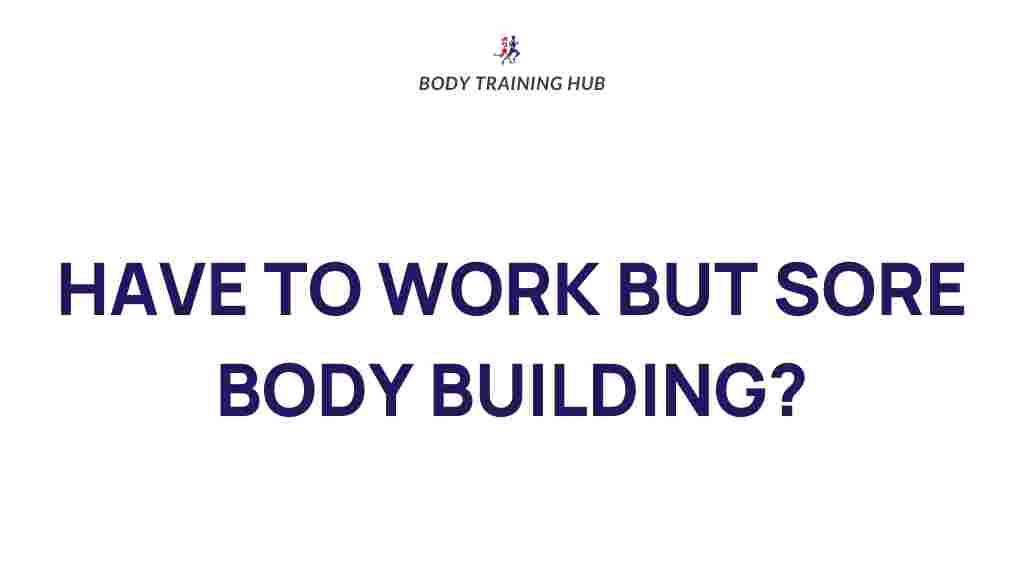Uncover the Secrets of Muscle Recovery
When it comes to bodybuilding and strength training, muscle recovery is often the unsung hero of athletic performance and growth. Many athletes and fitness enthusiasts focus solely on their training regimens, neglecting the crucial aspects of recovery that can significantly impact their results. In this article, we will explore the secrets of muscle recovery, delve into recovery techniques, and understand how proper recovery can enhance muscle growth.
Understanding Muscle Recovery
Muscle recovery is the process by which your body repairs and rebuilds muscle tissue after intense physical activity. This process is essential for muscle growth and overall performance improvement. During strength training, microscopic tears occur in the muscle fibers, and the recovery process helps the body to heal these tears, leading to stronger and larger muscles.
The Importance of Muscle Recovery in Bodybuilding
Recovery is not just about resting; it involves a combination of techniques and strategies that promote healing and growth. Here are some reasons why muscle recovery is crucial in bodybuilding:
- Prevents Injury: Adequate recovery helps prevent overuse injuries that can occur from repetitive strain.
- Enhances Performance: Proper recovery allows athletes to train harder and more effectively during their next workout.
- Supports Muscle Growth: Muscles need time to repair and grow; without proper recovery, growth can stall.
- Improves Mental Health: Recovery can help reduce stress and improve overall mental well-being, which is vital for sustained training.
Step-by-Step Recovery Techniques for Muscle Growth
Here, we’ll outline effective recovery techniques that can enhance your muscle recovery process:
1. Prioritize Sleep
Sleep is one of the most critical components of muscle recovery. During deep sleep, your body releases growth hormone, which is essential for muscle repair and growth.
- Aim for 7-9 hours of quality sleep each night.
- Create a sleep-friendly environment: dark, cool, and quiet.
- Establish a regular sleep schedule to optimize rest.
2. Hydration
Staying hydrated is crucial for recovery. Water helps transport nutrients to your muscles and aids in the removal of waste products.
- Drink plenty of water before, during, and after your workouts.
- Consider electrolyte-replenishing drinks after intense training sessions.
3. Nutrition
Proper nutrition is vital for muscle recovery. Your body needs the right nutrients to repair and grow muscle tissue.
- Protein: Consume high-quality protein sources such as chicken, fish, eggs, and plant-based proteins. Aim for 1.2 to 2.0 grams of protein per kilogram of body weight.
- Carbohydrates: Include complex carbs like whole grains, fruits, and vegetables to replenish glycogen stores.
- Healthy Fats: Incorporate healthy fats from sources like nuts, seeds, avocados, and olive oil.
4. Active Recovery
Engaging in low-intensity exercises on rest days can promote blood flow and help speed up recovery.
- Consider activities like walking, cycling, or yoga.
- Light stretching can also aid in recovery and flexibility.
5. Use Recovery Tools
Recovery tools can enhance the recovery process by reducing muscle soreness and improving flexibility.
- Foam Rollers: Use foam rollers to massage sore muscles and release tension.
- Massage: Professional or self-massage can help improve circulation and alleviate soreness.
- Compression Gear: Wearing compression garments can improve blood flow and reduce muscle soreness.
6. Stretching and Mobility Work
Incorporating stretching and mobility exercises post-workout can enhance flexibility and aid recovery.
- Focus on dynamic stretches before workouts and static stretches afterward.
- Consider yoga or Pilates for improving overall flexibility and core strength.
7. Cold and Heat Therapy
Utilizing cold and heat therapies can assist in recovery following intense training sessions.
- Cold Therapy: Ice baths or cold compresses can reduce inflammation and muscle soreness.
- Heat Therapy: Heat packs or warm baths can help relax muscles and improve blood flow.
8. Supplements for Recovery
While whole foods should be the primary source of nutrients, supplements can support recovery when necessary.
- BCAAs: Branched-Chain Amino Acids can help reduce muscle soreness and promote recovery.
- Creatine: Creatine can enhance muscle recovery and performance in high-intensity training.
- Protein Supplements: Whey or plant-based protein powders can help meet daily protein requirements.
Troubleshooting Common Recovery Issues
Even with the best recovery techniques, you may encounter challenges. Here are some common issues and how to address them:
1. Persistent Muscle Soreness
If soreness lasts longer than usual, consider:
- Reducing the intensity of your workouts.
- Incorporating more rest days into your routine.
- Evaluating your nutrition and hydration practices.
2. Lack of Progress
If you’re not seeing muscle growth, review your:
- Training program for proper progression and variety.
- Recovery strategies to ensure they are effective.
- Diet to ensure you are consuming enough calories and protein.
3. Overtraining Symptoms
Watch for signs of overtraining, including fatigue, irritability, and decreased performance. If you experience these symptoms:
- Take a break from training to allow your body to recover.
- Consult with a fitness professional for guidance.
- Evaluate your training volume and intensity.
Conclusion
Understanding and implementing effective muscle recovery techniques is essential for anyone involved in bodybuilding and strength training. By prioritizing recovery through sleep, nutrition, hydration, active recovery, and appropriate recovery tools, you can significantly enhance your performance and promote muscle growth.
Remember that recovery is just as important as the workouts themselves. So, take the time to invest in your recovery process, and you’ll find yourself achieving your bodybuilding goals faster and more efficiently.
For more information on recovery techniques, consider checking out this comprehensive guide. And if you want to explore more about strength training, visit this helpful resource.
This article is in the category Strength & Recovery and created by BodyTraining Team
